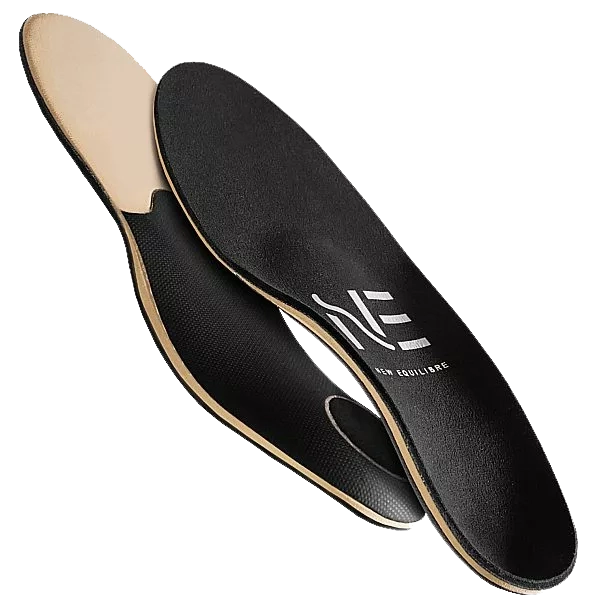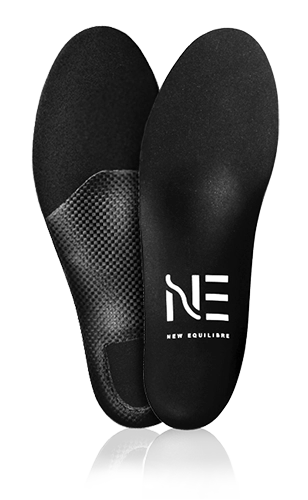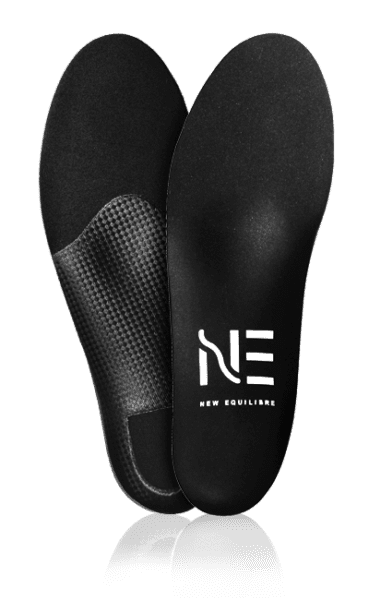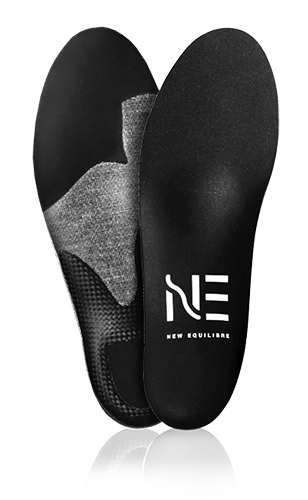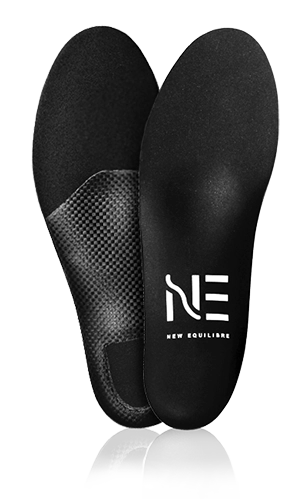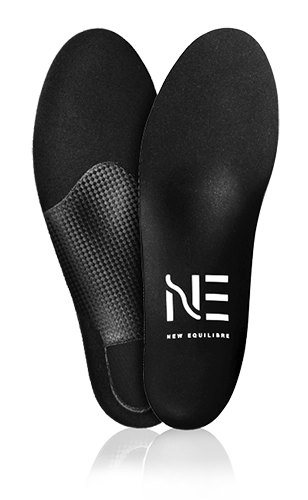TALALGIA
the complete guide
- Published on
- By New Equilibre
SUMMARY :
- What is talalgia?
- What causes talalgia?
- What are the symptoms of talalgia?
- How long does talalgia last?
- Orthopedic insoles for talalgia
- How can talalgia be treated?
- How to treat talalgia naturally: Grandmother's remedies
- Can I take time off work if I have talalgia?
- Can you do sport if you suffer from talalgia?
Talalgia is pain located at the heel, and thus encompasses several pathologies localized to the rearfoot. This pain can make walking and weight-bearing uncomfortable. Talalgia therefore represents a number of pathologies that are a nuisance in everyday life, so it's important to understand its origins.
In this article, we'll highlight the causes, symptoms and treatments of talalgia, to help you better understand and manage this condition.
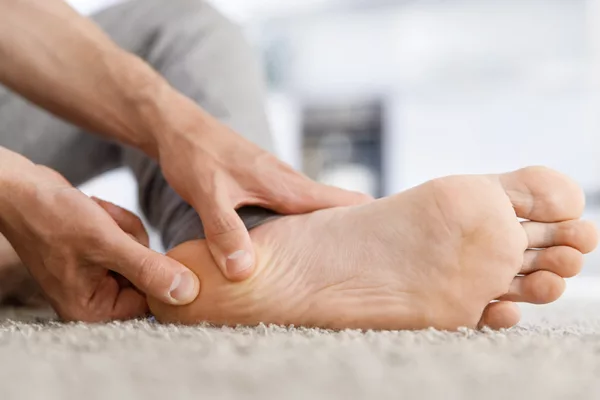
What is talalgia?
Talalgia is a medical term used to describe pain in the heel. This pain can be caused by various pathologies such as plantar fasciitis, achilles tendonitis, heel spur, injury or other pathologies affecting this region of the foot. Talalgia can be chronic or acute, and can be treated in different ways, depending on the underlying cause.
Talalgia can occur in different areas of the heel:
- At the back of the heel,
- Under the heel,
- Around the heel.
As mentioned above, these are generally pains caused by injury or inflammation.
What causes talalgia?
In addition to injuries and accidents, talalgia can be caused by a number of other conditions:
- Plantar Fasciitis : This pathology is a frequent cause of talalgia. It occurs when the band of tissue known as plantar fascia, which connects the heel to the toes, undergoes excessive tension or repetitive microtrauma. This leads to inflammation and pain in the heel.
- Achilles tendonitis : This is an inflammation of the Achilles tendon, which connects the calf muscles to the heel. It can also cause heel pain.
- Calcanean spur :Bone growth in the heel, which takes the form of a thorn under the heel bone. In the vast majority of cases, this bone spur is actually painless, but it causes muscle inflammation, which can be very painful and disabling on a daily basis.
- Retrocalcaneal bursitis : Also known as heel bursitis, this is an inflammation of the bursae around the heel. Pain is therefore localized around the heel.
- Plantar aponeurosis : It's the inflammation of the aponeurosis muscle, a connective tissue located under the foot at the arch of the foot.
Talalgia can also be a symptom of a calcaneus fracture. Fatigue fractures are sometimes associated with prolonged, intense and unusual physical activity. In this case, the pain is extremely severe as soon as the foot is placed on the ground. Fatigue fractures often occur in runners after a succession of running outings.
What are the symptoms of talalgia?
- Heel pain: Pain felt mainly in the heel or under the foot.
- Morning pain: Pain may be more intense after rest, as in the morning.
- Difficulty walking: Walking can become difficult, especially after long periods of inactivity.
How long does talalgia last?
The duration of talalgia can vary depending on a number of factors, including the underlying cause of the pain, the severity of the pathology and the treatment measures taken. In some cases, talalgia can disappear fairly quickly with proper rest and care, while in others it can persist for weeks or even months, especially if linked to chronic problems such as plantar fasciitis. The most effective way of providing rapid, long-term relief from this condition is to wear thermoformed orthotics.
Orthopedic insoles for talalgia
By providing extra cushioning and adequate support for the plantar muscles and foot structure, orthotics help minimize the tension and inflammation that cause talalgia. They also help restore good posture and an optimal gait, reducing pressure on the heel during walking.
At New Equilibre, we've designed high-tech, high-end orthopedic insoles, specific to each activity, to effectively relieve and prevent talalgia and other pathologies. The New Equilibre concept is the result of over 30 years' experience in orthopedic practices, working with thousands of patients. We make it easy to buy orthotics exclusively via our online store, with just a few clicks. Thousands of users around the world benefit from our expertise in high-tech insoles to improve their daily comfort.
Free delivery to metropolitan France, within 2 working days. Free returns within 14 days.
As talalgia is a very common pathology in sports, discover all the New Equilibre insoles adapted to your activity for optimal efficiency:
How can talalgia be treated?
Treatment for talalgia depends on the underlying cause of the pain. Here are a few approaches commonly used to relieve talalgia:
Rest : Avoid activities that aggravate pain, and give your foot enough rest to allow it to heal.
Analgesics and anti-inflammatories : Over-the-counter medications such as ibuprofen (Advil, Motrin) or naproxen (Aleve) can help reduce pain and inflammation.
Foot orthotics : Orthotics help to support the foot and reduce pressure on the heel, which can provide effective and lasting pain relief.
Stretching and exercises : Specific stretching and strengthening exercises can help improve the flexibility and strength of foot muscles, which can reduce pain and prevent recurrence.
Thérapie physique : A physiotherapist may recommend treatment techniques such as ultrasound therapy, laser therapy or specific exercises to help relieve pain and promote healing.
Suitable footwear: Wear supportive shoes with adequate cushioning to reduce pressure on the heel.
Injections : In some cases of severe talalgia, corticosteroid injections may be recommended to reduce inflammation and relieve pain.
How to treat talalgia naturally: Grandmother's remedies
There are several natural remedies that can help relieve talalgia. Here are a few suggestions for grandmother's remedies that may be helpful:
Apple cider vinegar compress: Soak a clean towel in apple cider vinegar diluted in warm water. Apply the compress to the sore heel for about 15-20 minutes to help reduce inflammation and relieve pain.
Essential oil massage: Mix a few drops of lavender, peppermint or eucalyptus essential oil with a carrier oil such as sweet almond or coconut oil. Gently massage the painful area with this mixture to relieve pain and promote relaxation.
Turmeric poultice: Mix turmeric powder with water to form a thick paste. Apply this paste to the sore heel and leave on for around 15-20 minutes before rinsing off with lukewarm water. Turmeric has anti-inflammatory properties that can help relieve pain.
Use of hot or cold compresses: Apply a hot or cold compress to the painful area to help reduce inflammation and relieve pain. You can use a hot water bottle or an ice pack wrapped in a towel.
Do footbaths help relieve talalgia?
Alternate between hot and cold footbaths to help reduce inflammation and relieve pain. The warm footbath can relax muscles and improve circulation, while the cold footbath can reduce swelling and numb pain.
Can I take time off work if I have talalgia?
It's quite possible to take time off work if you suffer from talalgia, especially if the pain is severe and affects your ability to carry out your usual work tasks. In many countries, health problems affecting your ability to work can be managed by a doctor-prescribed sick leave. You can therefore contact your doctor or an orthopedist to obtain a temporary work stoppage.
If you're looking for a solution to avoid time off work, orthopedic insoles can be a great help. In the vast majority of cases, wearing orthopedic insoles will quickly relieve your talalgia and give you the comfort you need to continue performing your job properly.
Can you do sport if you suffer from talalgia?
In most cases, it's best not to engage in intensive sport if you suffer from talalgia, as this may aggravate the condition and prolong recovery time. However, this depends on the underlying cause of the talalgia and the severity of the pain.
In some cases, low-impact sports activities may be permitted during recovery. Activities such as swimming or cycling can be practised, as they do not require heel support. However, wearing New Equilibre orthopedic insoles can still enable you to continue sporting activities such as running, fitness, tennis and other sports requiring rearfoot support. In fact, the insoles will quickly relieve pain by optimizing your stance, relieving excessive pressure on the heel and correctly distributing your stance thanks to the support of the plantar arches. What's more, New Equilibre insoles feature shock-absorbing heel materials and ultra-comfortable high-tech materials.
As a general rule, it is also advisable to allow the heel to rest by reducing the frequency of activity for a few days, depending on the severity of your talalgia.
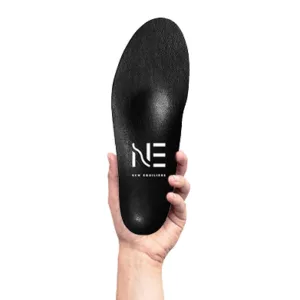
New Equilibre
Healthcare professionals specializing in the manufacture of orthopedic insoles for over 30 years. Clinically proven expertise with thousands of New Equilibre users and patients in orthopedic practices.

